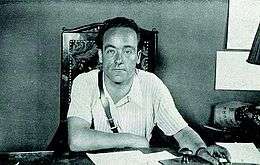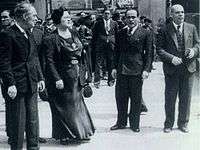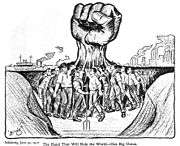Juan García Oliver

Juan García Oliver (1901, Reus, Tarragona Province – 1980, Guadalajara, Mexico) was a Spanish Anarcho-syndicalist revolutionary, and a leading figure of anarchism in Spain.

During the General Strike of 1917, García Oliver arrived in Barcelona and got involved in trade union activities. Along with Buenaventura Durruti and Francisco Ascaso, he founded Los Solidarios, an Anarchist group responsible for various assassinations, including an attempt on King Alfonso XIII's life. In 1920, he joined the Confederación Nacional del Trabajo (National Confederation of Labor, CNT).
He was one of the most vocal opponents of the moderate Syndicalist trend led by Ángel Pestaña (the latter was skeptical of the means advocated by the inner group of the CNT, the Federación Anarquista Ibérica (Iberian Anarchist Federation, FAI)). Pestaña led his supporters out of the Confederación in late 1932, in order to create the Syndicalist Party; García Oliver remained virtually unopposed as the advocate of paramilitary tactics, which he had argued for since the dictatorship of Miguel Primo de Rivera.
García Oliver eventually became the leader of the FAI. When the CNT reluctantly decided to enter the Popular Front government during the Spanish Civil War of 1936-1939, García Oliver served as Minister of Justice under Francisco Largo Caballero (1936-1937). He encouraged workers to disarm during the Barcelona May Days of May 1937, calling a ceasefire. Some consider him a traitor to the Spanish anarchists for his willingness to compromise with government, while others see his concessions as understandable considering the need to defeat Francisco Franco.
He left the government later in the same month, but remained active in Barcelona until Catalonia fell in 1939, taking refuge in France, then Sweden, and finally in Mexico (where he remained until his death).
References
Sources
- My Revolutionary Life: Juan Garcia Oliver interviewed by Freddy Gomez (Translated by Paul Sharkey) (2008), Anarchist Library series #19, Kate Sharpley Library, ISBN 978-1-873605-72-1.
